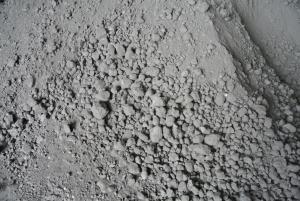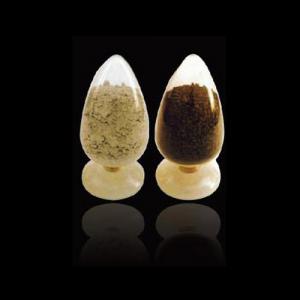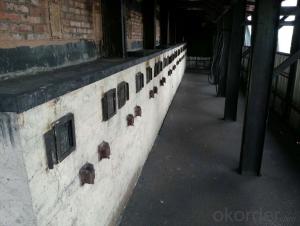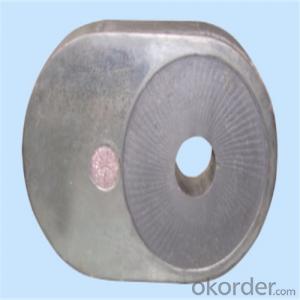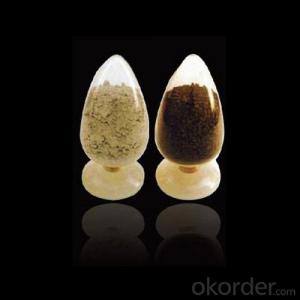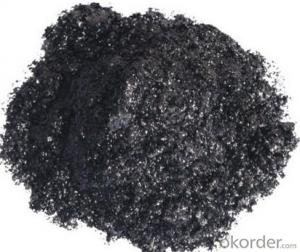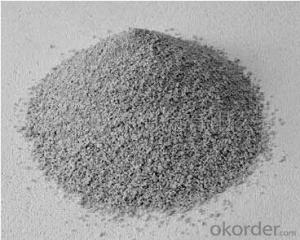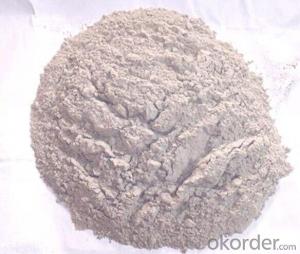Monolithic Refractories for Iron and Steel Industry - Silicon Nitride Bonded Silicon Carbide Products - Rammed
- Loading Port:
- Qingdao
- Payment Terms:
- TT OR LC
- Min Order Qty:
- 5 m.t.
- Supply Capability:
- 500 m.t./month
OKorder Service Pledge
OKorder Financial Service
You Might Also Like
Annual supply: Our company has passed ISO9001 quality management system certification and SGS certification. And the annual supply of shaped and unshaped refractory product is 28, 800-35, 000 tons.
Annual exports: Now we have gained a global sales network reaching Taiwan, Russia, Mongolia, South Korea, Vietnam, Pakistan, Bulgaria, Finland, Greece, Spain, Congo, Angola, South Africa, and Maldives, Jordan and so on. The export figure is more than USD 4 million.
Production equipment: Production and testing equipments are new, complete and automated or semi- automated. Such modern facilities and equipments have provided the fine technical guarantee for the production and testing.
Testing equipment: Our company's testing equipments as follows: High Temperature RUL TesterBulk Density TesterThe Pressure
Strong professional: Our company has thirty years producing experience in refractory product. Our manager will supervise on a various refractory' s production materials, process control, quality supervision and package delivery, and ensure the products are 100% qualified.
- Q: What are the common failure mechanisms of monolithic refractories in the iron and steel industry?
- Some common failure mechanisms of monolithic refractories in the iron and steel industry include thermal spalling, erosion, chemical attack, and mechanical damage. Thermal spalling occurs due to rapid temperature changes, causing the refractory material to crack and break. Erosion occurs when hot gases or molten metal wear away the refractory lining. Chemical attack refers to the corrosive action of slag or other chemicals on the refractory material. Mechanical damage may occur due to physical impacts or stresses, leading to cracks and fractures in the refractory lining.
- Q: How do monolithic refractories resist erosion from molten metals and slags?
- Monolithic refractories are designed to resist erosion from molten metals and slags through various mechanisms. Firstly, monolithic refractories are made from high-quality materials such as alumina, magnesia, and silica. These materials have excellent resistance to high temperatures and chemical attack, making them capable of withstanding the corrosive nature of molten metals and slags. Secondly, monolithic refractories have a dense structure that prevents the penetration of molten metals and slags. The dense matrix of the refractory material acts as a physical barrier, limiting the contact between the molten material and the refractory itself. Furthermore, monolithic refractories can also contain additives or binders that enhance their erosion resistance. These additives can include silicon carbide, graphite, or other materials that provide additional strength and resistance to erosion. In addition, monolithic refractories can be designed with specific shapes and features to minimize erosion. For example, the refractory lining in a furnace may be designed with curved shapes or baffles to redirect the flow of molten metals and slags, reducing their impact on the refractory surface. Overall, the combination of high-quality materials, dense structure, additives, and tailored designs allows monolithic refractories to effectively resist erosion from molten metals and slags. This resistance ensures the durability and longevity of refractory linings in industrial applications where high temperatures and corrosive environments are present.
- Q: In iron and steel industry, the main raw materials for blast furnace ironmaking are iron ore, coke and limestone. What's the use of limestone here?
- CaCO3 CaO + CO2 =C = 2CO + CO2Fe2O3
- Q: What are the typical applications of monolithic refractories in the iron and steel industry?
- Monolithic refractories are widely used in various applications within the iron and steel industry. These refractories, which are made of a single material, offer several advantages such as ease of installation, resistance to thermal shock, and excellent resistance to chemical attacks. Here are some typical applications of monolithic refractories in the iron and steel industry: 1. Blast Furnace: Monolithic refractories are used in the lining of blast furnaces, where they are subjected to extreme temperatures and chemical reactions. They provide thermal insulation, prevent erosion, and resist the corrosive effects of molten iron and slag. 2. Ladles and Tundishes: Monolithic refractories are used to line ladles and tundishes, which are vessels used for transporting and transferring molten metal. These refractories offer good thermal insulation and resistance to erosion and chemical attack, ensuring the integrity of the vessels. 3. Steelmaking Converters: Monolithic refractories are utilized in converters, which are used in the steelmaking process to convert molten pig iron into steel. These refractories provide protection against the high temperatures and aggressive chemical environments encountered during the process. 4. Electric Arc Furnaces (EAF): Monolithic refractories are used to line the walls and roofs of EAFs, which are used to melt scrap steel for recycling. These refractories offer excellent thermal insulation, resistance to slag erosion, and thermal shock resistance, ensuring the longevity and efficiency of the furnace. 5. Continuous Casting: Monolithic refractories are employed in the continuous casting process, where molten steel is solidified into a continuous slab or billet. These refractories line the walls and floors of the casting molds, providing thermal insulation and resistance to chemical attack from the molten steel. 6. Reheating Furnaces: Monolithic refractories are used in reheating furnaces, which are used to heat steel billets or ingots prior to further processing. These refractories provide insulation, resist high temperatures, and ensure uniform heating of the metal. Overall, monolithic refractories play a crucial role in the iron and steel industry by providing reliable and durable linings in various applications. Their ability to withstand extreme temperatures, chemical attacks, and thermal shocks makes them indispensable for maintaining the integrity and efficiency of the production processes.
- Q: What are the key innovations in monolithic refractories for the iron and steel industry?
- The iron and steel industry heavily relies on monolithic refractories, which serve as lining materials in various high-temperature processes like blast furnaces, ladles, and converters. Over time, the field of monolithic refractories has witnessed several crucial innovations that address specific challenges and enhance the overall performance of these linings. Among the significant innovations in monolithic refractories is the emergence of low cement and ultra-low cement castables. These castables contain reduced cement quantities, resulting in improved properties such as higher hot strength, better thermal shock resistance, and enhanced resistance to chemical attack. By decreasing the cement content, the refractory achieves higher density, reduced porosity, and increased mechanical strength, ultimately leading to improved durability and extended service life. Another innovation in monolithic refractories is the introduction of self-flowing castables. These castables are designed to exhibit excellent flowability and can be conveniently installed through pouring or pumping, eliminating the need for manual vibration. Self-flowing castables offer advantages like reduced installation time, improved lining quality, and enhanced performance in complex geometries or hard-to-reach areas. In recent years, advances in nanotechnology have also influenced the development of monolithic refractories. Refractory compositions now incorporate nanoparticles, such as nano-sized additives and binders, to enhance their properties. These nanoparticles enhance the refractory's mechanical strength, thermal conductivity, and corrosion resistance. Additionally, nanotechnology enables better control over refractories' microstructure, resulting in optimized performance and increased lifespan. The development of high-performance monolithic refractories has also been driven by the need for improved energy efficiency and reduced environmental impact. Insulating castables, for instance, have been created to provide excellent thermal insulation properties, leading to reduced heat loss and energy consumption in various applications. These refractories contribute to increased energy efficiency, lowered production costs, and minimized greenhouse gas emissions. Moreover, advanced installation techniques like gunning and shotcreting have revolutionized the application of monolithic refractories. These techniques enable faster and more precise installation, reducing downtime and improving productivity. Additionally, robotic application systems have been introduced, allowing for automated and consistent refractory installation, ensuring high-quality linings with minimal human intervention. In conclusion, key innovations in monolithic refractories for the iron and steel industry encompass the development of low cement and ultra-low cement castables, self-flowing castables, the incorporation of nanotechnology, the introduction of high-performance insulation materials, and advancements in installation techniques. These innovations have significantly enhanced the performance, durability, energy efficiency, and installation processes of monolithic refractories, thereby contributing to the overall efficiency and competitiveness of the iron and steel industry.
- Q: What are monolithic refractories?
- Monolithic refractories are a type of refractory material that is manufactured as a single, homogeneous unit, as opposed to being made from individual bricks or precast shapes. They are characterized by their ability to be shaped and installed in various applications without the need for joints or mortar, making them a versatile and convenient choice for lining furnaces, boilers, kilns, and other high-temperature industrial equipment. These refractories are typically composed of a mixture of refractory aggregates, binders, and additives, which are carefully selected and combined to provide the desired properties such as high temperature resistance, thermal shock resistance, and chemical durability. The aggregates used can include materials like alumina, magnesia, zirconia, and silica, while binders like clay, cement, or phosphate are added to hold the aggregates together. One of the advantages of monolithic refractories is their ability to adapt to complex shapes and designs, allowing for customized linings that can be tailored to specific equipment requirements. They are often applied by pouring, gunning, ramming, or spraying the refractory material onto the surface to be lined, allowing for quick and efficient installation. This eliminates the need for time-consuming bricklaying and jointing, reducing installation time and labor costs. Monolithic refractories are also known for their superior thermal conductivity, which enables them to withstand high temperatures and sudden temperature changes. They offer excellent insulation properties, preventing heat loss and improving energy efficiency in industrial processes. Furthermore, these refractories exhibit good resistance to chemical attack from molten metals, slags, gases, and other corrosive substances found in various industrial environments. This makes them highly suitable for applications in industries such as steel, cement, glass, petrochemical, and non-ferrous metals. In summary, monolithic refractories are a versatile and efficient solution for high-temperature applications. Their ability to be shaped and installed without joints or mortar, coupled with their excellent thermal conductivity and chemical resistance, make them a valuable choice for lining industrial equipment that operates under extreme conditions.
- Q: How do monolithic refractories perform in electric arc furnace roof applications?
- Monolithic refractories perform well in electric arc furnace roof applications due to their excellent thermal shock resistance, high temperature stability, and superior corrosion resistance. Additionally, monolithic refractories offer easy installation and maintenance, making them a reliable choice for electric arc furnace roofs.
- Q: How do monolithic refractories withstand thermal shock?
- Monolithic refractories are able to withstand thermal shock due to their unique properties and composition. Thermal shock occurs when there is a rapid change in temperature, causing stress and potential damage to the refractory material. However, monolithic refractories are designed to have high thermal shock resistance, and this is achieved through several mechanisms. Firstly, the composition of monolithic refractories includes materials with low thermal expansion coefficients. This means that they have a minimal change in size or volume when exposed to different temperatures. This property allows the refractory material to withstand thermal shock by minimizing the stress caused by temperature fluctuations. Secondly, monolithic refractories have excellent thermal conductivity. This property allows them to efficiently transfer heat away from the hot areas, preventing localized overheating and reducing the risk of thermal shock. The rapid dissipation of heat helps to maintain a more uniform temperature distribution within the refractory material, thus reducing the chances of cracking or spalling. Additionally, the binding agents used in monolithic refractories play a crucial role in their thermal shock resistance. These binders provide strength to the refractory material and help to maintain its integrity during thermal cycling. The binders also contribute to the refractory's resistance to thermal shock by reducing the permeability of the material, preventing the penetration of hot gases or liquids that could cause damage. Moreover, the installation technique of monolithic refractories is an important factor in their ability to withstand thermal shock. Monolithic refractories are typically applied as a single, continuous layer, eliminating the joints and seams that can be weak points in other refractory systems. This seamless installation method ensures better thermal shock resistance as there are no weak points for cracks to propagate. In summary, monolithic refractories withstand thermal shock through a combination of factors including their low thermal expansion coefficients, high thermal conductivity, suitable binding agents, and seamless installation techniques. These properties and design considerations allow monolithic refractories to effectively handle rapid changes in temperature and maintain their structural integrity, making them ideal for applications that involve thermal cycling and extreme temperature variations.
- Q: What are the key properties of pumpable refractories used for monolithic refractory applications?
- The key properties of pumpable refractories used for monolithic refractory applications include high flowability, good workability, excellent bonding strength, and high resistance to thermal shock. These pumpable refractories should also possess good pumpability and be able to withstand the intense heat and mechanical stress in the application environment. Additionally, they should have low water demand, high chemical resistance, and the ability to maintain their properties even after exposure to high temperatures.
- Q: What are the considerations for selecting monolithic refractories for reheating furnaces?
- There are several key considerations when selecting monolithic refractories for reheating furnaces. Firstly, the refractory material must have excellent thermal conductivity to efficiently transfer heat to the steel being reheated. Additionally, it should possess high resistance to thermal shock and mechanical stress to withstand the rapid temperature changes and mechanical forces experienced in the furnace. The refractory should also have low porosity to prevent the penetration of gases and slag, ensuring a longer service life. Other factors to consider include the refractory's resistance to corrosive environments, ease of installation, and cost-effectiveness. Ultimately, choosing the right monolithic refractory is crucial to ensure optimal furnace performance and longevity.
Send your message to us
Monolithic Refractories for Iron and Steel Industry - Silicon Nitride Bonded Silicon Carbide Products - Rammed
- Loading Port:
- Qingdao
- Payment Terms:
- TT OR LC
- Min Order Qty:
- 5 m.t.
- Supply Capability:
- 500 m.t./month
OKorder Service Pledge
OKorder Financial Service
Similar products
Hot products
Hot Searches
Related keywords
